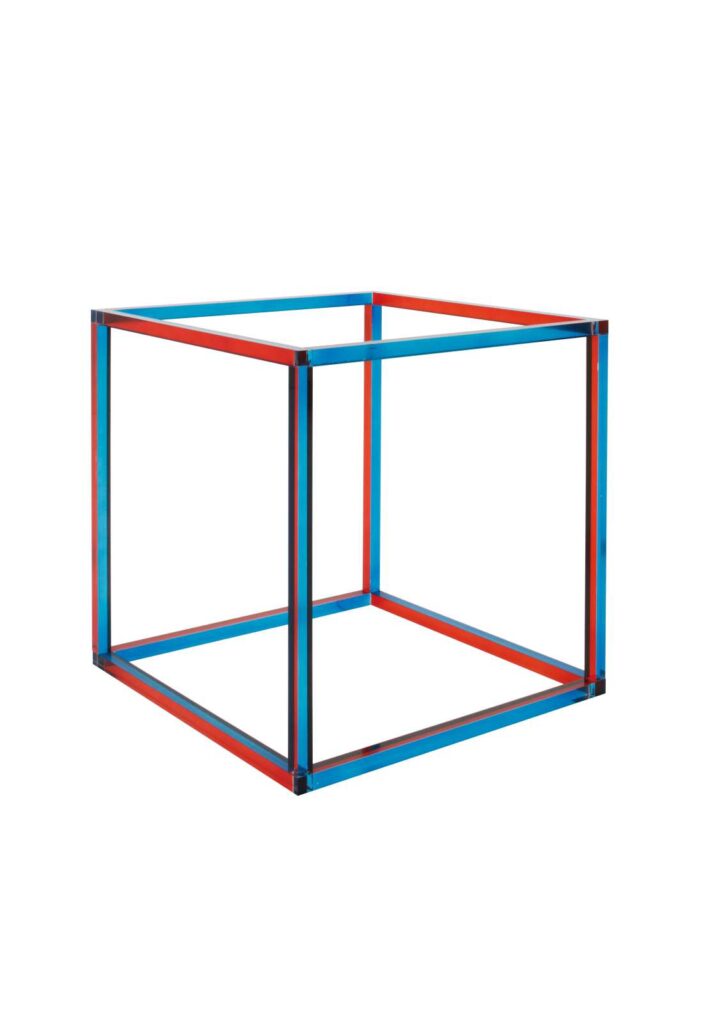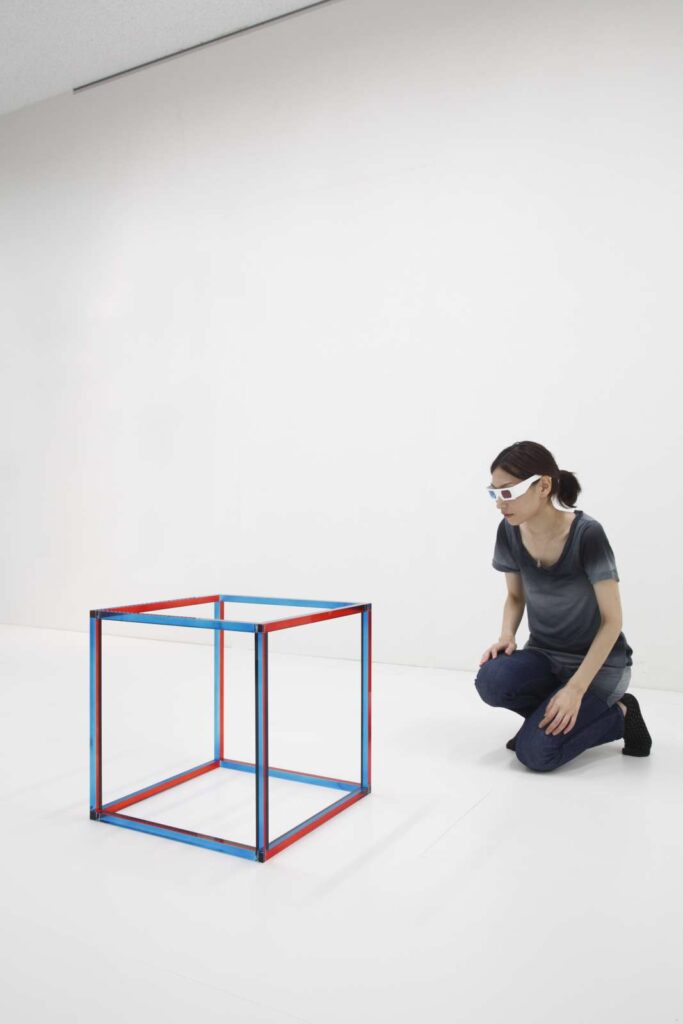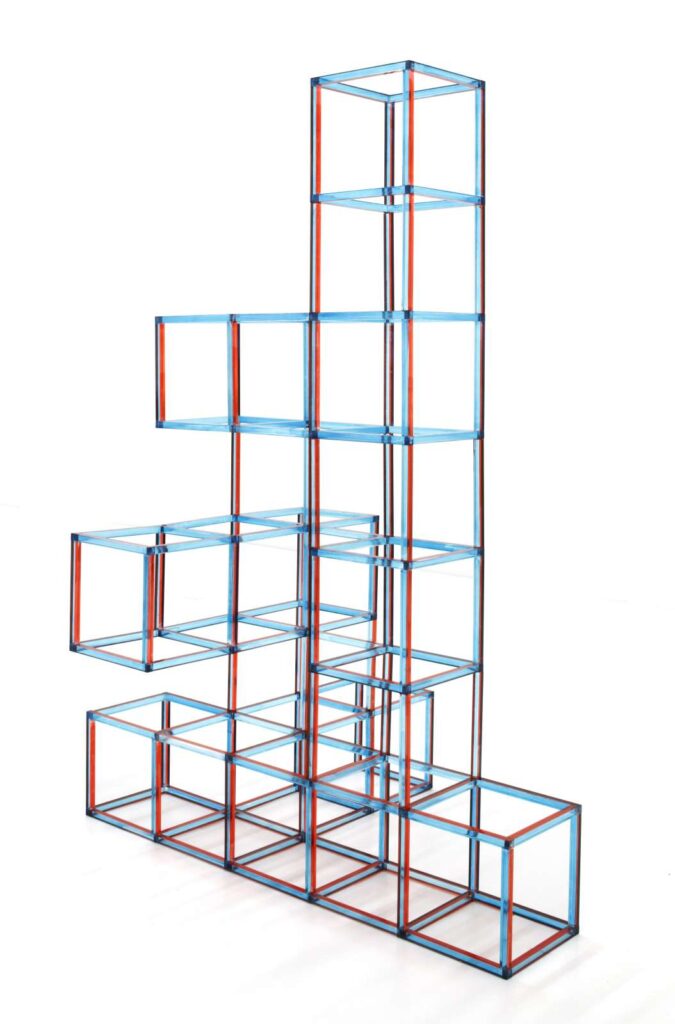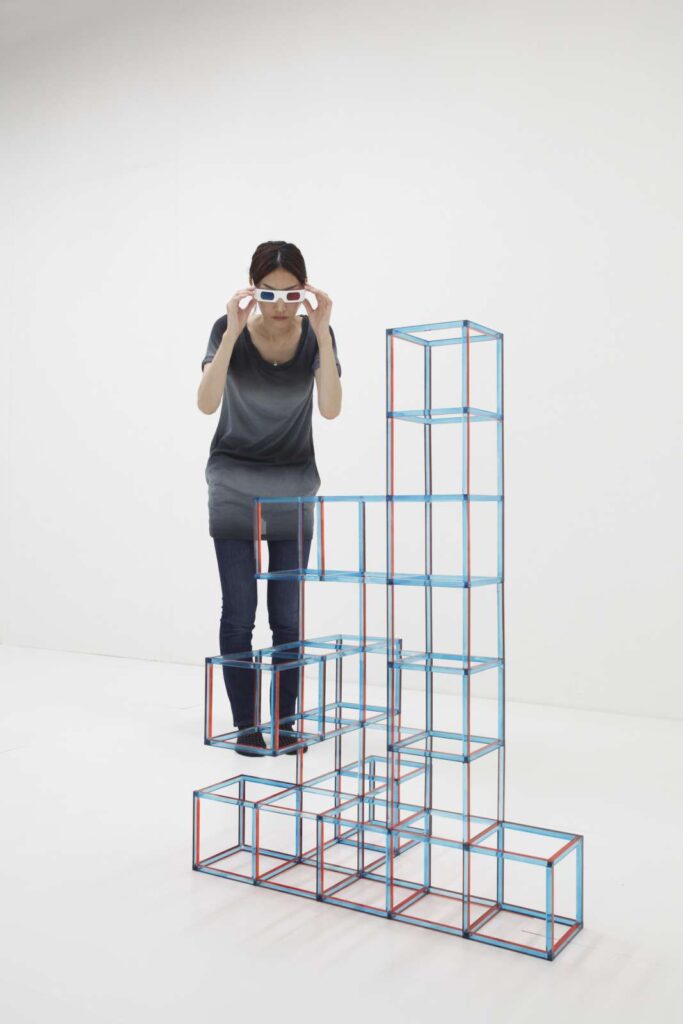Solvent ink on acrylic bar
500 × 500 × 500 mm (Cube), 460 × 760 × 1200 mm (Structure)
Having watched “Cave of Forgotten Dreams,” a 3-D documentary film by director Werner Herzog, I found myself interested in 3-D technology. Although out-fashioned compared with present day 3-D technologies, anaglyph is a handy way to give depth perception. Perhaps, everyone has seen anaglyph grasses with red and blue lenses. Our visual perception entails a slight gap between both eyes (called “parallax”). We are usually not aware of it, and even if we consciously bear it in our mind, it will not cause duplicated images. Our brain is capable of calculating the slight gap between two images in order to work out depth with a high accuracy. Therefore, we can replicate 3-D experience on a two dimensional image by separating the image on two eyes through red and blue filters, which are combined again in the brain.
The “depth perception on the two- dimensional image” inspired me to conceive an idea to create “a somewhat new perception on the three-dimensional object.” The idea developed into application 3-D viewing to the three dimensional object and was embodied as anaglyph sculptures. The sculpture can be seen from any angles and changes its appearance with different perspectives. Viewing a sculpture involves motion and is a time-related experience.
A question arises here. Can 3-D viewing on the three-dimensional object allow us to see the four dimensional object?



